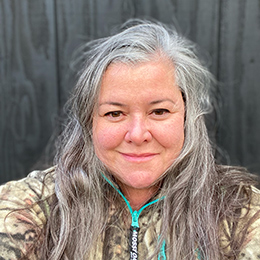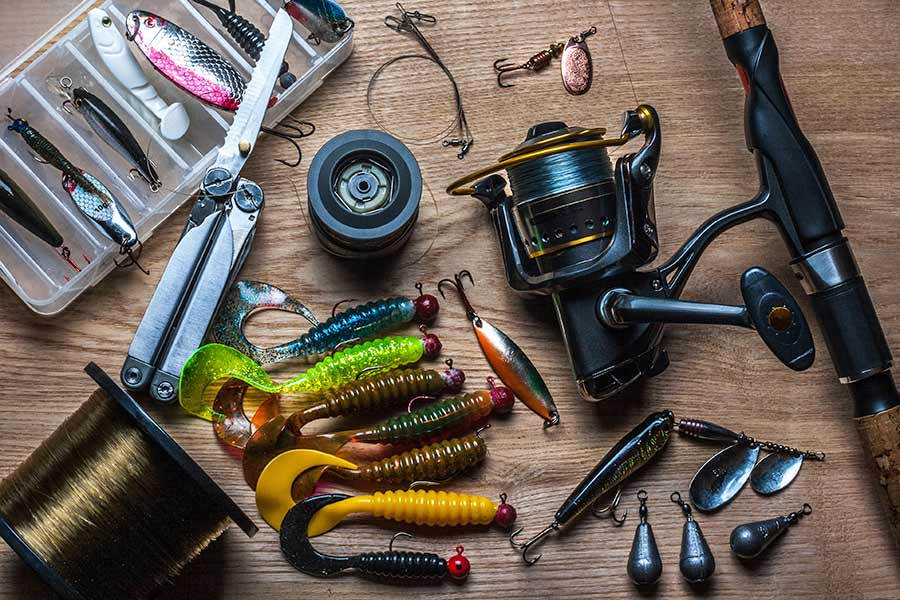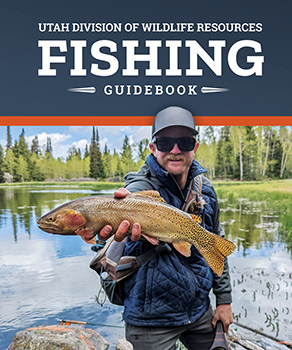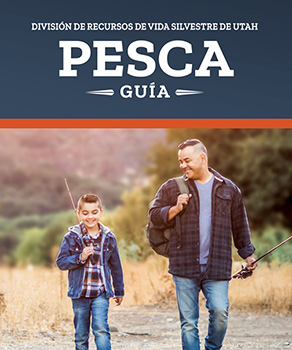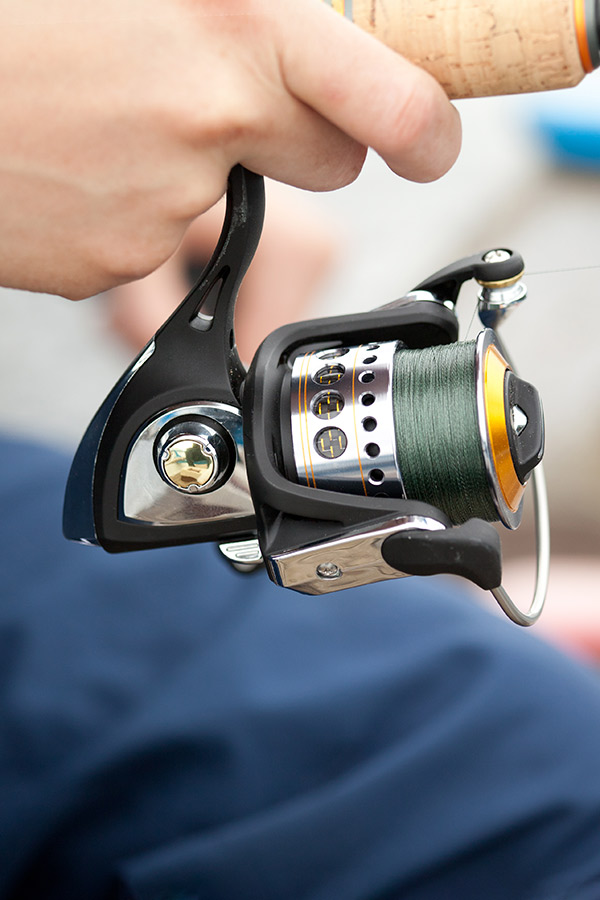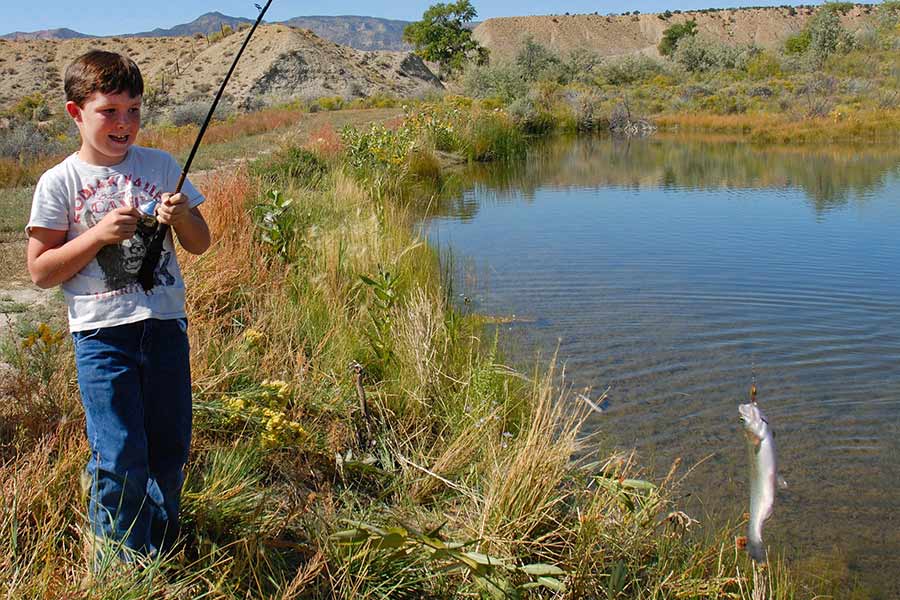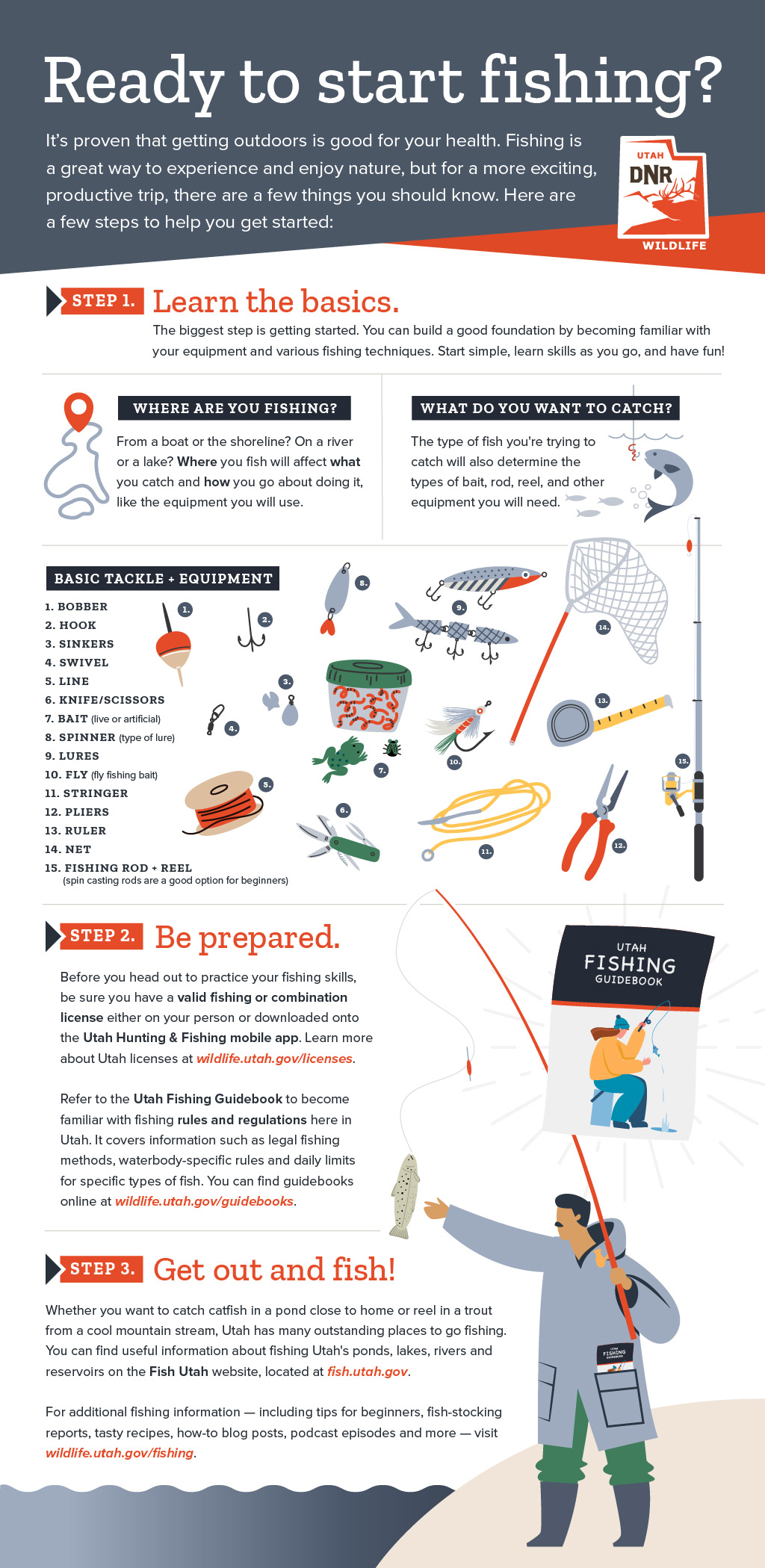Learn to fish: basic equipment
What gear and tackle do I need to get started fishing?
By Darby Doyle
For many anglers, selecting, organizing and using fishing gear is almost as fun and interesting as actually catching fish! But for beginners, it may feel hard to know where to start and what to buy.
You will need a few basic pieces of equipment to get started fishing. These items can be purchased at most sporting goods stores or general retailers. Sometimes you can find great used equipment at second-hand stores. (We'll cover fly fishing specifically in an upcoming blog post.)
There are many kinds of fishing gear and tackle, including fishing rods and reels, bait and lures, and different kinds of fishing rigs. It can seem a bit overwhelming to get started, so here are some suggestions for fishing equipment that will help you catch many of Utah's popular fish species.
New to fishing?
- See the Utah Fishing Guidebook (guía en español, Guía de pesca de Utah) for the state's fishing rules and regulations, including what kind of fish you can catch in Utah, and how many fish you can keep.
- Buy a fishing license (ages 12 and older)
- Find places to fish near you
- Fishing access for anglers with physical challenges
Fishing rod and reels
The type of fishing rod you choose depends on the kind of fish you want to catch, where you are planning to fish, and what type of bait or lures you'll be using.
There are three basic types of rods that anglers use for freshwater fishing from shore or a boat:
- Spin casting rod and reel combos are a good choice for a beginner and are the best choice for a kid's first fishing rod. They are very easy to use and are also good for lighter baits and lures. They are usually 5 to 8 feet in length, but models designed for kids can be as short as 2 or 3 feet.
- Spinning rod and reel combos are usually between 5 and 8 feet in length, and the reel sits underneath the rod when you cast. Spinning rods work well with lighter baits and lures, and are good general-purpose rods. They cast farther than spin casting rods, and are easy enough to use that they make a good choice for adults who are just getting into fishing. (Spin casting combos, above, are a better choice for kids who are learning how to fish.)
- Bait casting rod and reel combos cast heavier baits, plugs and lures than spin casting and spinning combos. They don't cast as far as a spinning setup, but they are designed to cast with a high degree of accuracy. So, they work well when fishing around brush or docks. They are the most difficult of these three rod options to use and are recommended for more advanced anglers. These rods are usually between 5 and 8 feet long, but some long-casting rods are up to 14 feet in length!
Freshwater reels hold and spool out your fishing line. Regardless of type, all reels are designed with a brake (called "drag") to slow running fish, a handle to retrieve line and a bracket to fasten the fishing reel to the rod.
Choosing a rod and reel that works for you
We recommend a fiberglass spinning rod and reel combo if you are just getting started fishing. They are tougher than graphite, and can be a less expensive option until you figure out what kind of fishing you like best. Graphite rods are more expensive but are also stronger and more sensitive. They are a great option for those who are looking to upgrade their fishing equipment. Spinning combos are widely used in fishing for popular sport fish, including trout, bass, panfish and walleye.
Fishing rods for panfish
Ultra-light fishing rods are made for use with light lines (4- to 8-pound test), which are ideal for catching small fish like panfish. You want to have plenty of sensitivity so that you can feel even the slightest nibbles on your line. You may want to consider a medium-weight rod if you are fishing for crappie around brush.
Fishing rods for trout
Medium-weight fishing rods are ideal for catching trout. You want to have some sensitivity, but enough weight to keep a fighting fish on the line. Ultra-light or light fishing rods can be a fun option if you are fishing for smaller trout in high mountain lakes.
Fishing rods for bass, walleye and tiger muskie
The best rod and reel combo to target big, fighting fish will be quite sturdy so you can throw a higher-test fishing line (so it won't break with a big fish on the line), and cast heavy lures and baits to attract the type of fish you want. To start out fishing for bass or walleye, you may want to consider a medium-power rod that flexes a bit when the fish is hooked. Medium-heavy or heavy-weight rods can be helpful if you are fishing for bass in brush. You'll want a heavy rod for muskie.
Keep in mind: There are limits to how many fish you can keep per day (called "possession or "bag limit") depending on species. And at some Utah waterbodies, there are also rules about what length of fish you can keep. See the Utah Fishing Guidebook (Guía en español, Guía de pesca de Utah) "Daily limits" list of bag limits for different kinds of fish on page 7, and "Rules for specific waters" section beginning on page 25 to check the regulations where you are going to fish.
BEFORE YOU GO FISHING, remember that you need a Utah fishing or combination license if you are 12 years of age or older. Fishing licenses are available online, and at retail stores all over the state. Or, if you need assistance figuring out how to fill out the application, please go to a DWR office and our friendly staff will be happy to assist you.
Funds from fishing licenses stay in Utah, and go directly back to improving fish habitat, funding fish stocking efforts and supporting public access to great places to go fishing all over the state.
Tackle and other equipment
- Line — There are many different types of line. The strength of a fishing line is called its test, and it is measured in pounds. A tip: The test of the line should roughly match the weight of the species you are fishing for.
- Hooks — There are many different types of hooks, but most anglers either use worm or treble hooks for freshwater fishing. Keep in mind: The larger the hook size number, the smaller the hook size.
- Sinkers — Sinkers are weights that come in many different shapes and sizes. They are helpful for casting and placing your bait near the bottom of a waterbody.
- Bobbers — Bobbers are oblong styrofoam or hollow plastic floats that you attach to your line. They suspend the lure at a desired depth and also act as strike indicators (so you can tell if you have a fish on the line).
- Bait — Nightcrawlers and artificial dough are the most common types of bait. You typically put nightcrawlers on worm hooks and dough on treble hooks. Keep in mind: Live baitfish are not allowed in Utah.
- Flies — Fish can be attracted to artificial, yet very realistic-looking imitations mimicking the types of food they eat in the wild. Flies come in a huge variety of types and sizes, most are almost weightless, and they are used for fly fishing.
- Lures — Lures are typically heavier than flies, and are made in a variety of artificial materials. When using bait tackle, once you let the cast loose, the weight of the lure carries the momentum in the air and the line trails behind it.
- Net — After you catch a fish, you use the net to lift it out of the water.
- Pliers — Pliers are a tool you use to remove hooks from the fish. If you are planning to release the fish you catch, you'll want to have a good set of pliers at the ready.
- Ruler — Depending on the kind of fish you are catching, you will need to check the length of the fish to make sure it meets size requirements if you intend to keep a fish. Conveniently, many coolers and nets have a ruler marked on them.
- Stringer — A stringer is a line of rope or chain you can use to string fish on so they can be immersed or kept alive in water until you are done fishing.
Keep in mind: At many Utah waterbodies, only artificial flies and lures are allowed (no bait). See the "Rules for specific waters" section beginning on page 25 of the Utah Fishing Guidebook (Guía en español, Guía de pesca de Utah) to check the regulations for where you are planning to go fishing.
Get started fishing!
